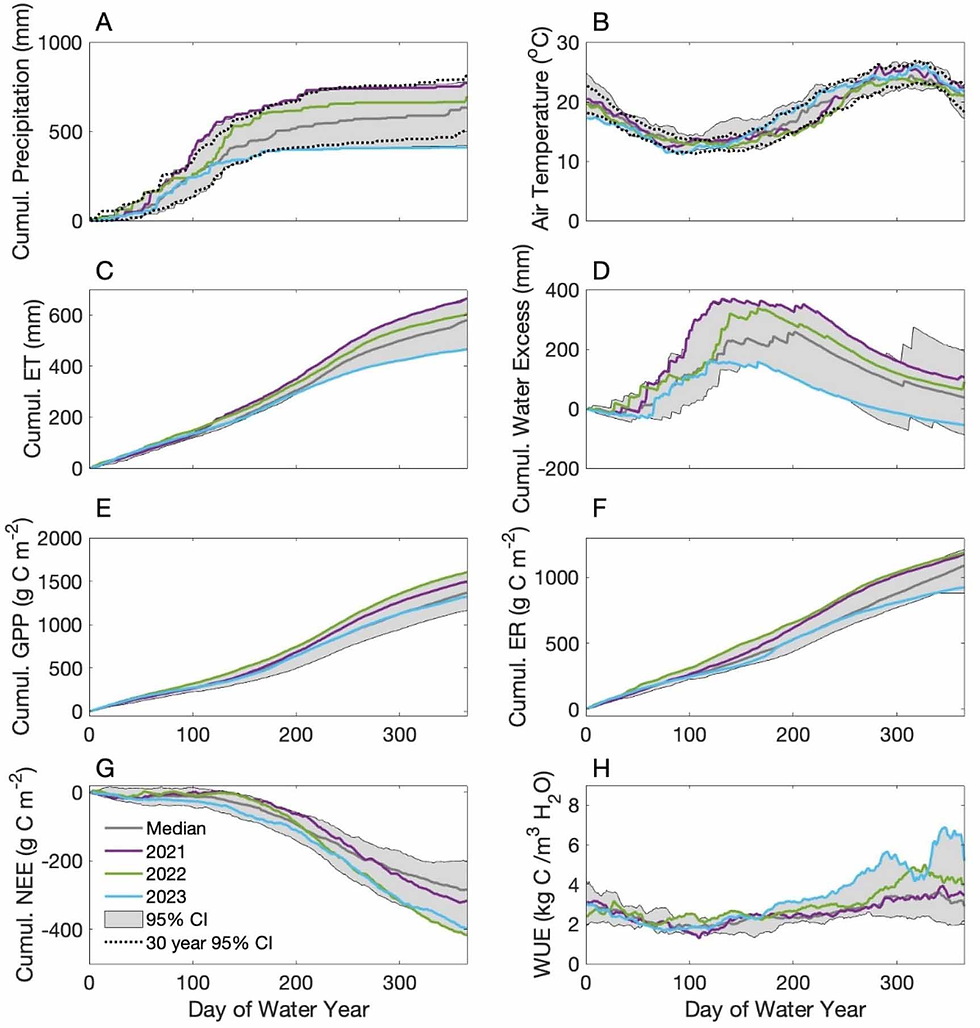Coping with the heat
- sallythompson5
- Aug 1
- 2 min read
I see my last blog post was in March ... right about when the teaching semester started! Now that we're recovering from that big semester, it's a good time to catch up on a few recent papers.
This blog post is about a paper we started writing at the end of 2024, when we'd just lived through a nasty hot and dry summer from 2023-2024. We wanted to learn what had happened to the Banksia woodlands during a record breaking drought and heatwave - and were able to do so using the fantastic information at the Gingin TERN Ecosystem Processes Supersite.

We started by comparing the different water and carbon fluxes from the tower, looking at how the 2023-2024 water year compared to historical averages. The water fluxes were clearly suppressed relative to all historical averages - the driest year on the site's records (Precipitation), with the lowest ET and the highest water use efficiency (WUE). Carbon balance was less abnormal - with carbon uptake being close to normal (GPP), and lower than usual respiration (ER) leaving net ecosystem exchange (NEE) within normal ranges.

The water stress during the hot drought was imposed in part because the water storage in the soil went to zero by the end of summer. Comparing total water storage between 2022 and 2023, we see almost no change in soil water storage from Jan - April in 2024 - indicating there was no further capacity for water reductions in the soil - the mobile water was gone. At the same time, ET in this period continued at about 30cm of total water usage. This presumably must have come from groundwater.


The consequences of the dry conditions were that canopy death began at Gingin. Some trees we were monitoring with sapflow died. The greenness at the site as monitored by remote sensing showed that the Gingin TERN site had an approximately 0.05 NDVI anomaly compared to "normal" conditions.

Scaling up the effects at Gingin with remote sensing, we see that vegetation declines were occurring across the whole of the Banksia Woodland area, and overall the declines at Gingin were less extreme than those we saw across the whole of the Swan Coastal Plain.

Thankfully, winter 2024 was dry but not extreme, and winter 2025 is looking good and damp. Recovery from this period is taking place and the bush is resilient. Still, it is interesting to realise that the vegetation must have been depending on groundwater to get through the end of the dry summer - and that groundwater is continuing to fall.
How will this ecosystem get through future dry conditions, if that groundwater resource is not present? A question we are wrestling with.




Comments